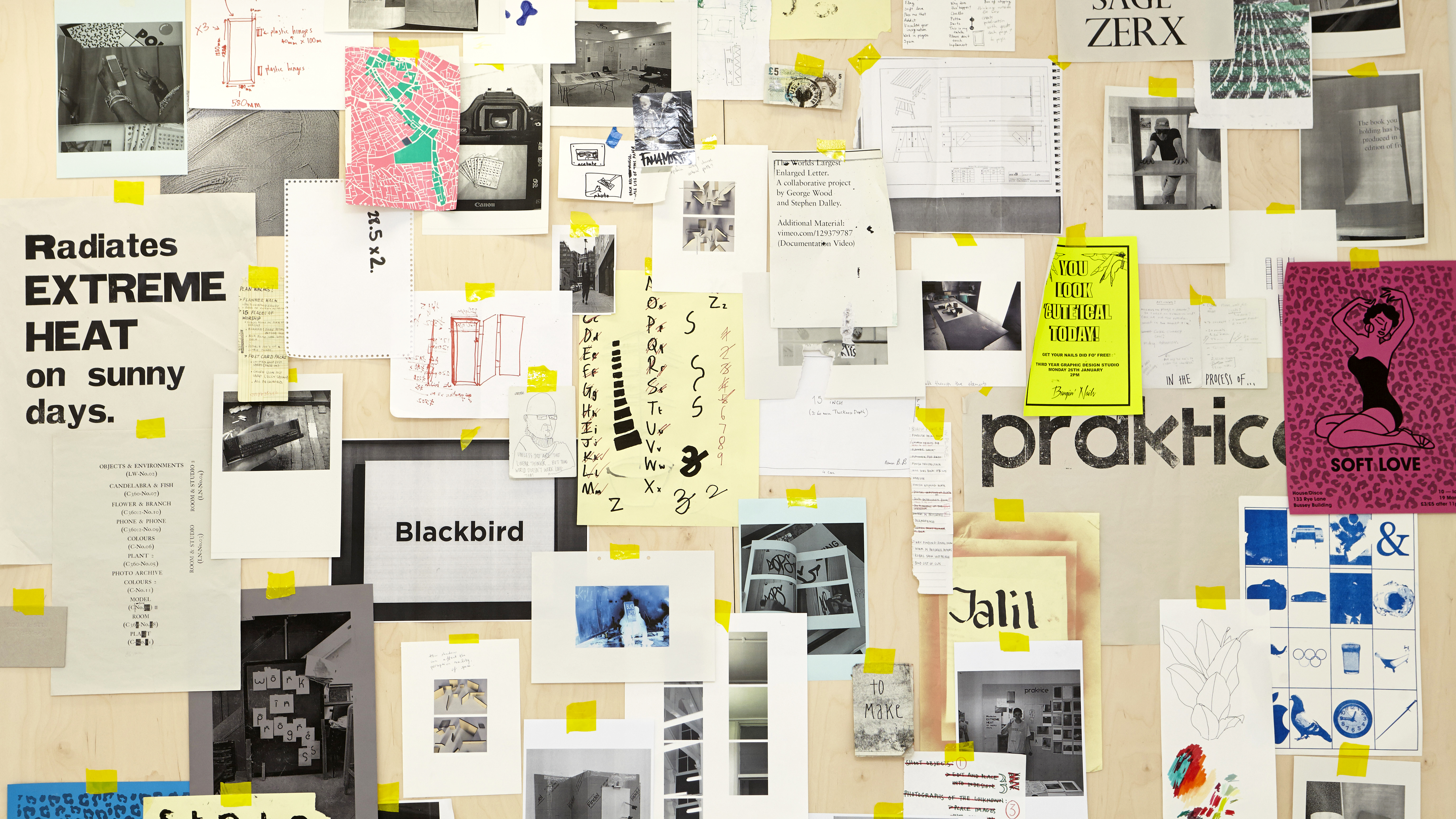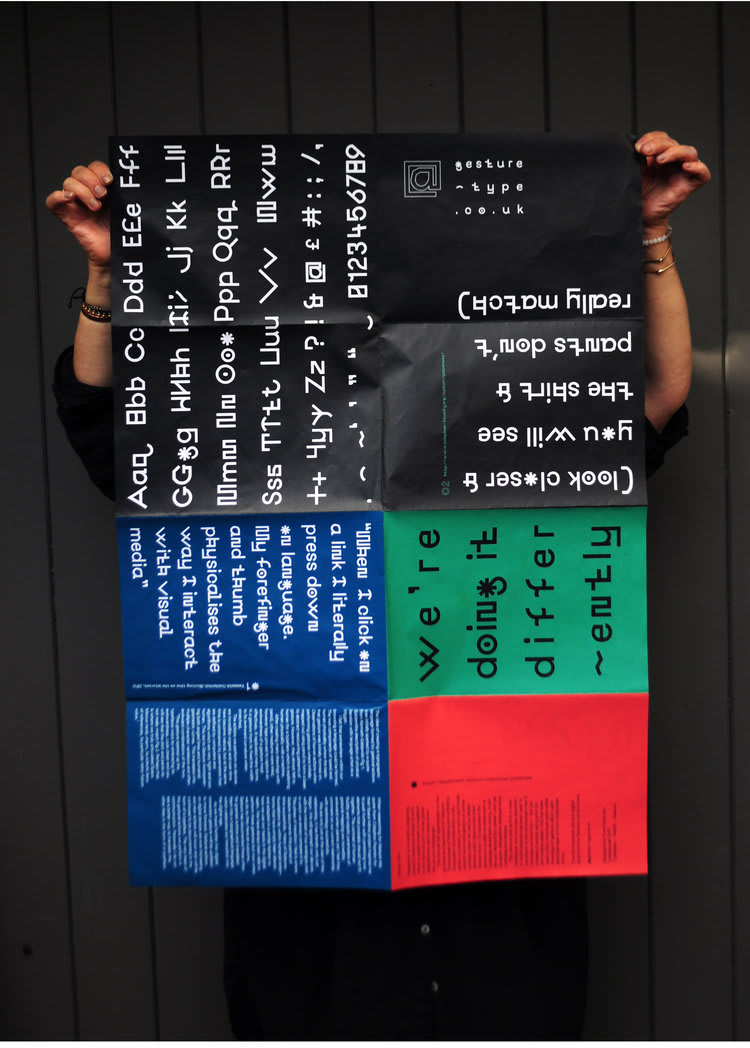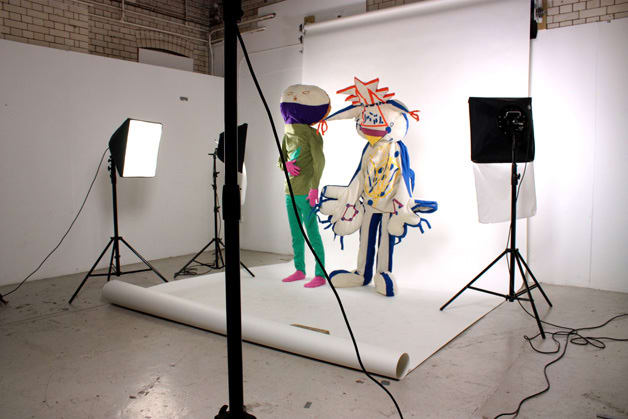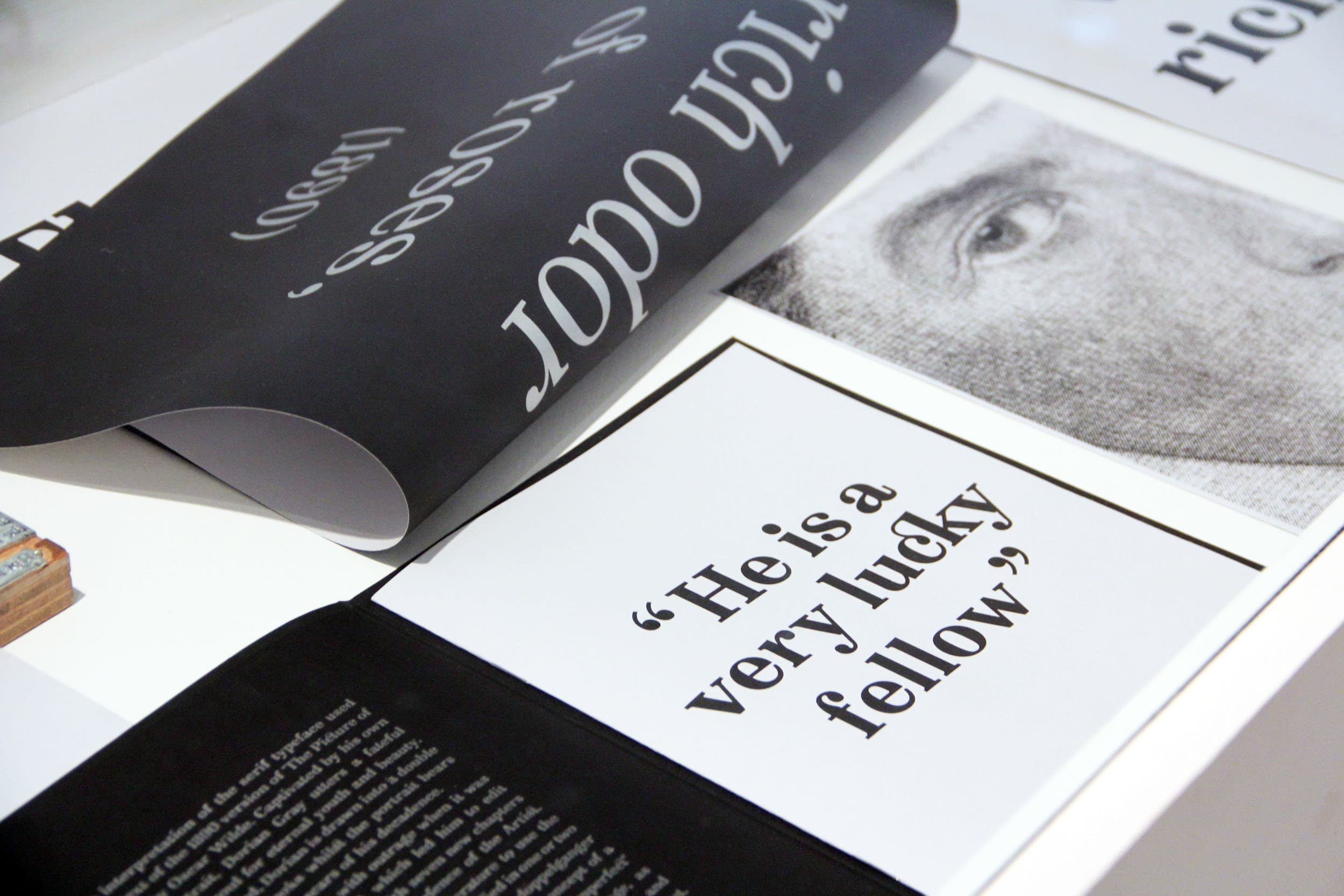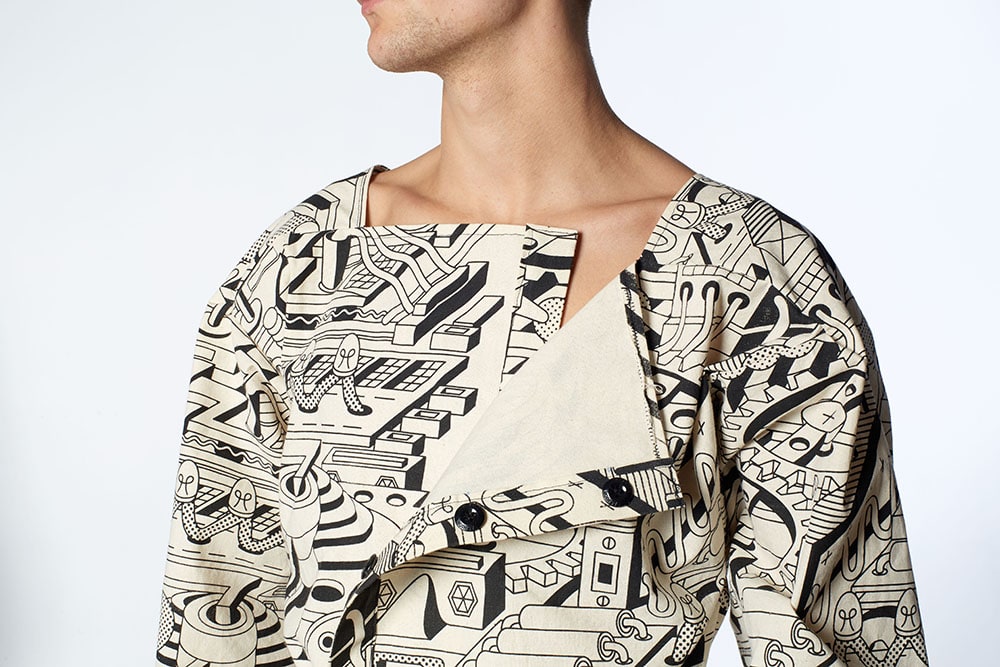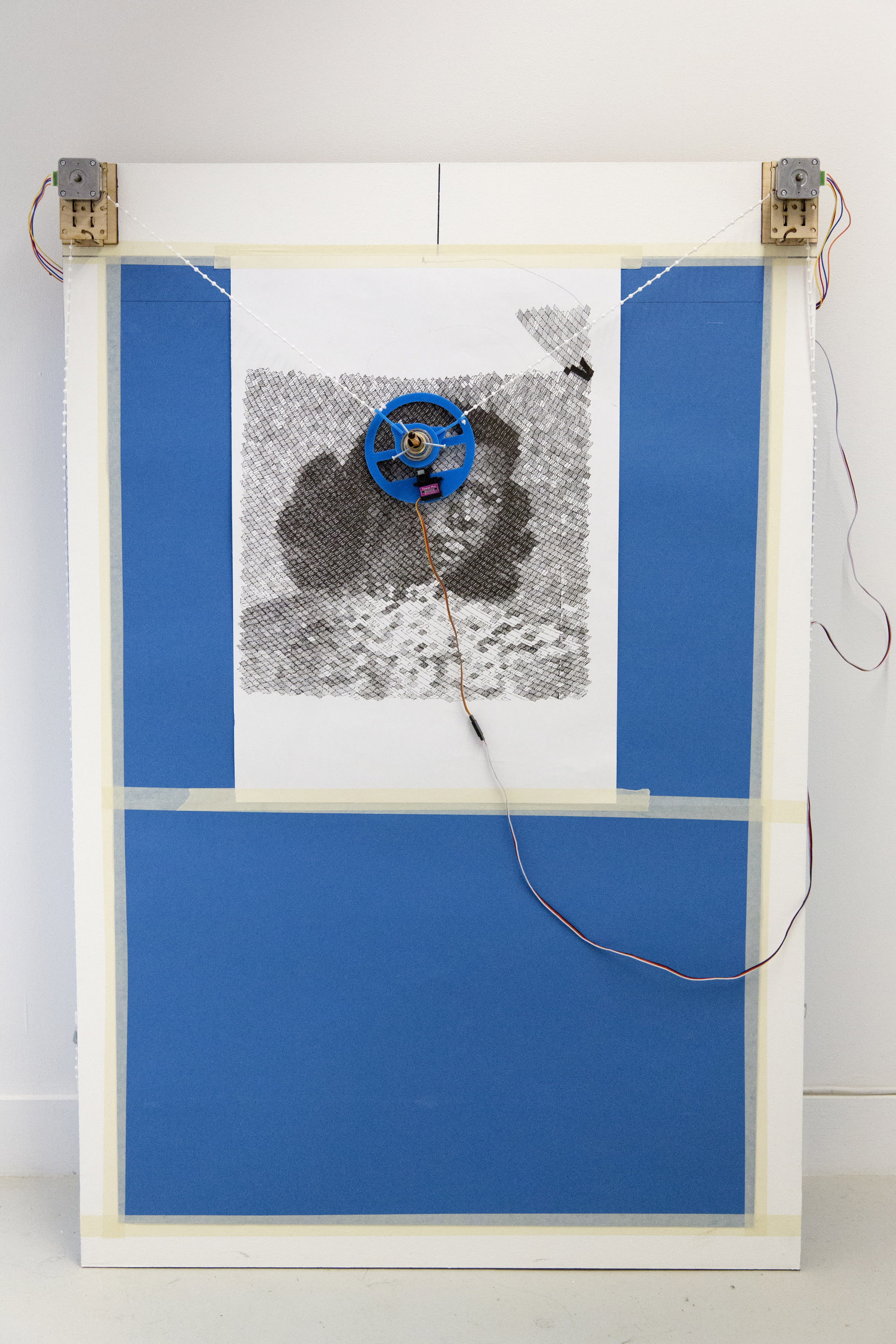Course units
Year 1
Unit 1: Introduction to Graphic Design
This unit is an introduction to your course, your College, the University and London. Students come from many diverse educational backgrounds and a part of this unit will enable you to reflect on your own background and how that shapes the way you approach the course.
Unit 2: Type
This unit introduces you to the fundamentals of typography and typographic design. You’ll encounter the technical features of type — anatomy, terminology, rules and principles. You’ll look at the historic developments and contemporary uses of type design as a vehicle for expressing and communicating information and language.
Unit 3: Image
This unit invites you to explore the multiple ways in which images are produced, shared and understood — as signs that carry meaning, as tools of persuasion and opportunities for discourse. You’ll work with a range of methods, to generate experimental images that illustrate, challenge and interpret a range of concepts in response to a brief.
Unit 4: Publish
This unit builds upon the methods and processes introduced in your previous units. It invites you to work both independently and in collaboration with others, to consider graphic design practices produced in relation to audiences. You’ll engage in research and experimentation to design material that can be shared with intended audiences through analogue, digital and hybrid publishing processes.
Year 2
Unit 5: Collaborative and collective practices
You’ll be introduced to different ways in which collaborative working can help you to focus and enhance your own creative strengths. You’ll have the chance to work with fellow students and creative communities.
Unit 6: Systems
This unit considers the individual parts and overall systems within design. You’ll look at the patterns, relationships and interconnections between things. You’ll explore the systems that operate within design practice and those that design practice produces. These include systems for generation, interaction and evaluation. Through your design thinking, making and writing, you will address the constraints and opportunities within a systems approach.
Unit 7: Territories
This unit invites you to explore a range of climate, racial and social justice challenges through graphic design. You’ll challenge traditional ideas of graphic design by experimenting with materials, sites and experiences. Through making and testing, you’ll have opportunity to recontextualise your approach to design practice.
Unit 8: Position
This unit further addresses key ideas, arguments and propositions within the design canon. Through a careful selection and study of critical design thought, you will work to identify those narratives, perspectives and voices that remain excluded or under-represented. You’ll consider their relevance to the social, environmental and technological challenges of our time. You’ll integrate writing and making considering the relationships and interconnections across graphic design and your position within it. The unit will prepare you for the development of a self-directed approach to research-led practice in year 3.
Year 3
Unit 9: Professional futures
This unit aims to address the 3Es: employability, enterprise and entrepreneurship. You'll reflect on your learning and skills across the entirety of your study. You’ll have an opportunity to showcase your outcomes and intentions. You'll consider your next steps as you enter industry or continue with your education.
Unit 10: Design practice
This unit invites you to reflect on the ways in which you have approached your work as a designer so far. You’ll make choices about the areas you want to focus on by responding to a series of creative and professional briefs. You’ll develop responses and ways of working which refine a methodological approach to your design practice. The insights that emerge will help you plan the key questions and interests you will address in the final unit.
Unit 11: Design studio
In this unit you’ll produce a self-directed body of work based on your design research interests. Your research investigation will be articulated through an integrated practice of research, design and writing. The insights and material that you generate through your research investigation will contribute to your final portfolio and public show.
Optional Diploma between Years 2 and 3
Between Years 2 and 3 of the course, you’ll also have the opportunity to undertake one of the following additional UAL qualifications:
Diploma in Professional Studies (DPS)
This optional diploma can be taken between years 2 and 3. With support from your tutors, you’ll undertake an industry placement for a minimum of 100 days/20 weeks. As well as developing industry skills, you’ll gain an additional qualification upon successful completion.
Diploma in Creative Computing
This optional diploma in Creative Computing. This will develop your skills in creative computing alongside your degree. After successfully completing the diploma and your undergraduate course, you’ll graduate with an enhanced degree: BA (Hons) Graphic Design (with Creative Computing).
Diploma in Apple Development
This optional diploma can be taken between years’ 2 and 3. You’ll have the opportunity to become an accredited Apple developer, undertaking a learning programme designed by Apple for UAL. After successfully completing the diploma and your undergraduate degree, you’ll graduate with an enhanced degree: BA (Hons) Graphic Design (with Apple Development).
